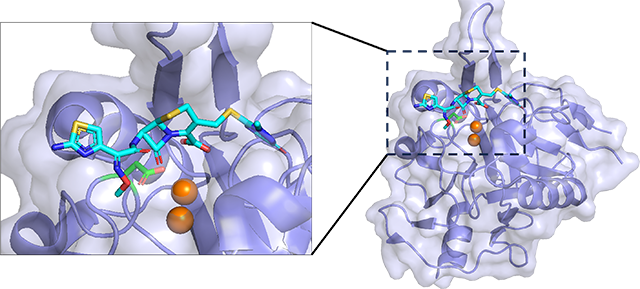By Jeff Brooks-Gillies
Randy Blakely, Ph.D., executive director of the Florida Atlantic Stiles-Nicholson Brain Institute, and co-inventor Maureen Hahn, Ph.D., research associate professor of biomedical science in the Charles E. Schmidt College of Medicine, were awarded a patent in 2023 for a novel use of the protein MBLAC1 in screening for potential therapeutic agents to treat drug addiction.
Before their work on this patent, other researchers had shown the beta-lactam antibiotic ceftriaxone could diminish the signs of neurodegenerative disease and addiction in animal models, but they weren’t sure how the repurposed antibiotic functioned. In 2018, the Blakely lab established that MBLAC1 is a major, if not exclusive, high-affinity target for ceftriaxone in the brain.
To investigate the potential for MBLAC1- targeted drugs to limit the effects of abused substances, the Blakely lab next developed a mouse with a disrupted MBLAC1 gene.
“The question was: if we preclude expression of MBLAC1 in mice, would we lose the beneficial effect of ceftriaxone in suppressing signs of chronic cocaine use,” Blakely said. “And if that’s the case, then we might have something with clinical potential, and something therefore we should patent.”
This proved to be correct: mouse studies led by Hahn comparing wild-type mice without MBLAC1 showed that the protein was necessary for ceftriaxone to mitigate behavioral effects of cocaine exposure, including an enhanced response to the drug that arises with cocaine withdrawal, known as sensitization.
Their awarded patent describes methods to use this discovery to screen for therapeutic agents that enter the brain more efficiently than ceftriaxone and can bind to MBLAC1 with even greater affinity in order to treat addiction symptoms.

“We have a patent on the use of MBLAC1 in the context of substance abuse, but there is so much more to do,” Blakely said. “We only scratched the surface with respect to the targeting of MBLAC1, but we have cleared an initial, important hurdle in bringing this opportunity to improved drug screening in a disease with precious little to offer.”
